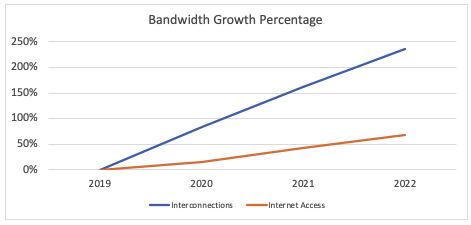Sometimes change is accompanied by a loud BANG and other times change quietly sneaks in with the slightest of whispers. It seems that in the case of using software to construct network interconnections the latter is happening. Because of the ongoing impact of COVID-19 on our communications infrastructure, BANG or whisper, we all have a lot to gain by embracing software-defined interconnections (SD-IX).
Colocation companies like Equinix, Flexential, DRT, Cologix, Coresite, and many others have been talking about the importance of interconnections for quite some time. If you check out the links to their content, you might wonder, “Why am I now just becoming aware of the change in connectivity requirements?” Maybe it takes a disaster like COVID-19 to make us examine our infrastructure more closely. I know from talking to my friends in the communications industry that the Coronavirus is certainly is hitting us with a big wake up call that change is afoot.
I recently assembled some research examining the growth of interconnections. Here’s a snippet of the data to illustrate why interconnections are important. Below is a graph showing the forecast in the growth of internet access capacity and the demand for interconnection capacity. In the next few years, the growth in interconnection bandwidth consumption is going to eclipse internet access connection speeds by several orders of magnitude.

But First, Let’s Talk Interconnections.
But, before I get to the punchline, let me clarify what a network interconnection is. An interconnection is a link between two different networks. An example of an interconnection is the connection between the network in your home to the internet. Billions, if not trillions, of interconnections exist, so you might wonder “What’s the problem?”
In some ways, it’s the internet’s fault. Ultimately no two networks are the same. I actually have a patent that explains why: US9596144B2. (Check it out if you’re a true nerd.)
Using a familiar example, I can explain why using interconnections becomes complicated. When we interconnect to the internet, we adapt our home network to make it work with the internet. Because the internet is so ubiquitous and is so much larger, our home network is built specifically to make connecting to the internet easier. Many of us connect to the internet via a device we know as a modem. Inside that modem, there is a router that performs the magic of creating the interconnection that allows our home network to become part of the greater internet network.
Because there are so many interconnections to the internet and because they are so easy to build, we have been lulled into thinking that all interconnections are easy to build. Actually, the internet is purposely built to make interconnecting to it easy. But in the last few years, if you have a business, the internet isn’t the only network you want to connect to. Perhaps you’ve heard of this thing called cloud computing?
Cloud Computing Makes Interconnections Complicated
Cloud computing comes in many different flavors known as Software as a Service (SaaS), Infrastructure as a Service (IaaS), and Platform as a Service (PaaS). When most people think about cloud computing they think of SaaS. SaaS offerings are typically provided via the Internet so these services have few if any interconnection challenges.
The problems emerge when businesses try to use the other types of cloud computing services; IaaS and PaaS. This is because in order to reach those services, businesses need to interconnect to the cloud service provider’s (CSP) network. To do this, businesses first tried to obtain IaaS services via interconnects to the internet. So, businesses were building an interconnection to the internet, to reach the cloud service provider’s interconnection to the internet to finally create an interconnection over top of these interconnections to the cloud service provider’s network. Sound complicated? It is.
For those organizations that have already taken advantage of interconnecting through their colocation provider, when COVID-19 locked us all down and caused a dramatic increase in demands for online services, they were able to upgrade their services easily on their colocation providers portal using software.
The Revolution: Software-Defined Interconnections
Yet as complicated as reaching IaaS (and PaaS) services can be, interconnections to CSPs are growing at a very fast pace. This is because there is a tremendous demand for IaaS services. Luckily, colocation providers have started to make it much easier for businesses to get interconnected to CSPs. How? Colocation providers are deploying new services allowing businesses to build software-defined interconnections (SD-IX).
Software-defined interconnections are reliable, fast, simple, and much easier for businesses to create. For those organizations that have already taken advantage of interconnecting through their colocation provider, when COVID-19 locked us all down and caused a dramatic increase in demands for online services, they were able to upgrade their services on their colocation providers portal using software.
The rest of us will have to wait.
So now for the punchline. The current interconnection demand forecasts are based on pre-Coronavirus data sets. If we look at the growth in colocation providers’ company stock values in the last month as an indicator of things to come, perhaps the SD-IX change is going to happen to the sound of an EXPLOSION instead of a BANG. Now might be a good time to prepare for the SD-IX revolution.
Are you ready?


